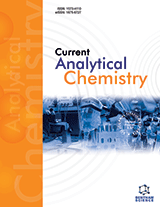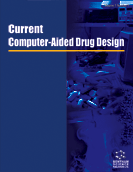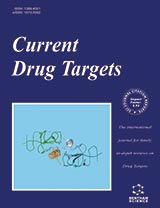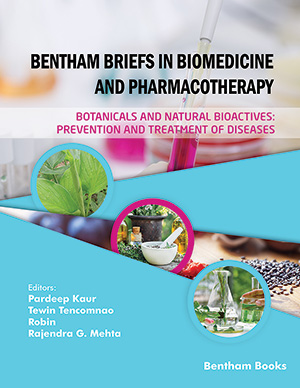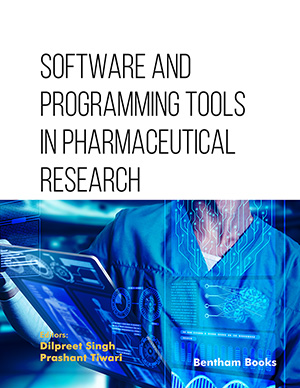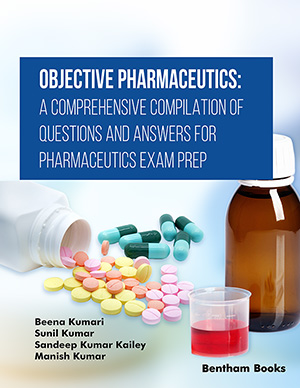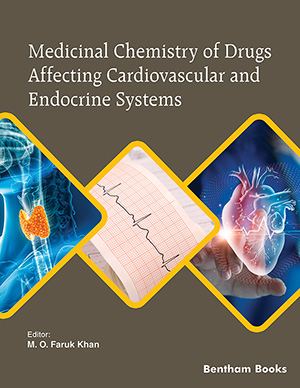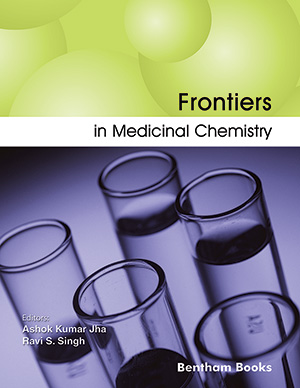Abstract
Fluorescence polarization immunoassay methods for the detection of pesticides and their metabolites or degradation products are reviewed. Advantages and limitations for application to pesticide detection in environmental and food samples are discussed. The influence of the structure of fluorescentlabeled tracers and the affinity and specificity of antibodies on analytical performance is examined. The methods are simple, readily automated, and rapid (total time for assay of a water sample is about 1 min) with sensitivity of 1 - 10 ng / ml pesticide in 0.01 - 0.1 ml sample.
Keywords: Fluorescence polarization immunoassay,, pesticide,, review.
Combinatorial Chemistry & High Throughput Screening
Title: Fluorescence Polarization Immunoassays for Pesticides
Volume: 6 Issue: 3
Author(s): Sergei A. Eremin and David S. Smith
Affiliation:
Keywords: Fluorescence polarization immunoassay,, pesticide,, review.
Abstract: Fluorescence polarization immunoassay methods for the detection of pesticides and their metabolites or degradation products are reviewed. Advantages and limitations for application to pesticide detection in environmental and food samples are discussed. The influence of the structure of fluorescentlabeled tracers and the affinity and specificity of antibodies on analytical performance is examined. The methods are simple, readily automated, and rapid (total time for assay of a water sample is about 1 min) with sensitivity of 1 - 10 ng / ml pesticide in 0.01 - 0.1 ml sample.
Export Options
About this article
Cite this article as:
Eremin A. Sergei and Smith S. David, Fluorescence Polarization Immunoassays for Pesticides, Combinatorial Chemistry & High Throughput Screening 2003; 6 (3) . https://dx.doi.org/10.2174/138620703106298301
| DOI https://dx.doi.org/10.2174/138620703106298301 |
Print ISSN 1386-2073 |
| Publisher Name Bentham Science Publisher |
Online ISSN 1875-5402 |
Call for Papers in Thematic Issues
Artificial Intelligence Methods for Biomedical, Biochemical and Bioinformatics Problems
Recently, a large number of technologies based on artificial intelligence have been developed and applied to solve a diverse range of problems in the areas of biomedical, biochemical and bioinformatics problems. By utilizing powerful computing resources and massive amounts of data, methods based on artificial intelligence can significantly improve the ...read more
Eco-friendly Agents for Biological Control of Pathogenic Diseases
The discovery of an alternative biological approach to disease management includes work on medicinal products derived from natural sources as a starting point for the development of eco-friendly agents for these diseases and the injuries they cause, as well as reducing human contact with hazardous chemicals and their residues. We ...read more
Emerging trends in diseases mechanisms, noble drug targets and therapeutic strategies: focus on immunological and inflammatory disorders
Recently infectious and inflammatory diseases have been a key concern worldwide due to tremendous morbidity and mortality world Wide. Recent, nCOVID-9 pandemic is a good example for the emerging infectious disease outbreak. The world is facing many emerging and re-emerging diseases out breaks at present however, there is huge lack ...read more
Exploring Spectral Graph Theory in Combinatorial Chemistry
Scope of the Thematic Issue: Combinatorial chemistry involves the synthesis and analysis of a large number of diverse compounds simultaneously. Traditional methods rely on brute force experimentation, which can be time-consuming and resource-intensive. Spectral Graph Theory, a branch of mathematics dealing with the properties of graphs in relation to the ...read more
 4
4
- Author Guidelines
- Graphical Abstracts
- Fabricating and Stating False Information
- Research Misconduct
- Post Publication Discussions and Corrections
- Publishing Ethics and Rectitude
- Increase Visibility of Your Article
- Archiving Policies
- Peer Review Workflow
- Order Your Article Before Print
- Promote Your Article
- Manuscript Transfer Facility
- Editorial Policies
- Allegations from Whistleblowers
Related Articles
-
Effect of <i>Pelargonium graveolens</i> on Glucose Metabolism in Streptozotocin-
Induced Diabetic Rats
Cardiovascular & Hematological Disorders-Drug Targets Paring Down Obesity and Metabolic Disease by Targeting Inflammation and Oxidative Stress
Current Neurovascular Research A Potential Contribution of Chemokine Network Dysfunction to the Depressive Disorders
Current Neuropharmacology The Properties of Poly(3-hydroxybutyrate-co-3-hydroxyhexanoate) and its Applications in Tissue Engineering
Current Stem Cell Research & Therapy Salivary Total Sialic Acid Levels Increase in Breast Cancer Patients: A Preliminary Study
Medicinal Chemistry Pathophysiology of Post-Operative Low Cardiac Output Syndrome
Current Vascular Pharmacology Patent Selections
Recent Patents on Endocrine, Metabolic & Immune Drug Discovery Ezetimibe; More Than a Low Density Lipoprotein Cholesterol Lowering Drug? An Update After 4 Years
Current Vascular Pharmacology Effects of Erythropoietin on Brain Function
Current Pharmaceutical Biotechnology Looking for New Inhibitors for the Epidermal Growth Factor Receptor
Current Topics in Medicinal Chemistry Poly (ADP-Ribose) Polymerase-1 (PARP-1) as Immune Regulator
Endocrine, Metabolic & Immune Disorders - Drug Targets Capsaicin-Sensitive Nociceptive Innervation of the Dura Mater: Implications for the Pathomechanism of Headache
Anti-Inflammatory & Anti-Allergy Agents in Medicinal Chemistry The Role of Obesity in the Development of Polycystic Ovary Syndrome
Current Pharmaceutical Design Postoperative Thoracic Epidural Anesthesia in Gastrointestinal Surgery: Outcomes, Quality of Life, and Current Controversies
Current Drug Therapy The Rise of Carbapenem-Resistant Acinetobacter baumannii
Current Pharmaceutical Design Nutrition Communication in General Practice
Current Nutrition & Food Science Breast Cancer: Not Only a “Womans” Disease
Current Women`s Health Reviews Application of Nanohydrogels in Drug Delivery Systems: Recent Patents Review
Recent Patents on Nanotechnology Role of Monocarboxylate Transporters in Drug Delivery to the Brain
Current Pharmaceutical Design Vitamin D as a Potential Therapeutic Option in Cancer Treatment: Is There a Role for Chemoprevention?
Anti-Cancer Agents in Medicinal Chemistry









